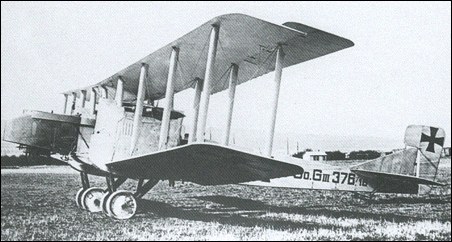 |
Gotha G.III1916 |  |
| BOMBER | Virtual Aircraft Museum / Germany / Gotha |
 |
The Gotha G.II and G.III bombers made their appearance in 1916. The two bombers were remarkably similar, differing only in their engines and internal details. The G.III entered service in August of 1916 and was powered by two Mercedes D IVa direct drive engines. Engine power went directly to the propeller shaft without using a reduction gear to reduce revolution speed. Both aircraft were armed with two 7.92mm Maxim IMG Parabellum machine guns - one in the nose and another in the aft fuselage - and carried approximately 540kg of bombs. A few G.IIs and G.IIIs were equipped with a trapdoor in the undersurface of the rear fuselage, which permitted the rear gunner to take up a prone position and fire aft or downwards from a ventral position to defend the bomber's vulnerable 'blind spot.'
|  COMPANY PROFILE | |||||||
 |

|

